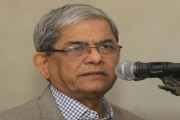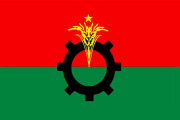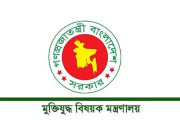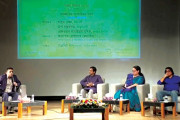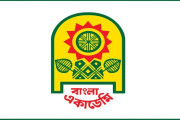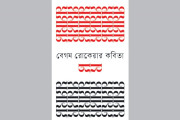The British depended heavily on the upper caste Hindus to perpetuate their rule in the then Bengal. It affected the life, culture and agriculture of Bengal. The oppressed people used to come to Syed Shah Husein Rumy for seeking advice on their day to day problems.
Dr. Syed Nesar Ahmad Rumy: We know Islam, the religion of fraternity and complete faith to Allah, first came to this part of the sub-continent about one thousand years back. It is also significant that Islam did not come to this area with the help of sword and military might. Mainly it had come to this fertile land by some spiritual leaders who preached the messages of Islam in different times of last one thousand years. Among those spiritual leaders/dervishes, Hazrat Shah Jalal (r), Hazrart Shah Paran (r), Hazrat Khan Jahan Ali, Hazrat Shah Mukhdum, Shah Ali, Shah Sultan, Bayijid Bostami and many others are very famous in our religious and spiritual history. We know each and every one of them has different stories about their work and their way of preaching Islam.
Other than preaching Islam they also acted as social reformers in the then time’s highly caste-oriented society. It is known to all that the area where we live was the land administered by Hindu/ Buddist kings in different times of history. But later Buddhists were forced to leave this area by the revivalist Hindus and they took over all sorts of powers and positions. That society was very much caste-oriented. Common people were very much oppressed and neglected by upper class Hindus. They used to think and to mean that except them all the commoners were untouchables.
These people were mainly farmers, weavers, fishermen, potters, cobblers, barbers and a number of different professional groups. In that society they had no dignity and even they did not have any right to encounter the so-called upper class people. In every sphere of society they used to be oppressed all the time. So now anyone can ask how it was possible to convert a large number of people under the umbrella of Islam. But the answer is very crystal clear that it was Islam’s attractive values that drew people to Islam. When people saw that Islam did not distinguish people by their creed, colour, caste and position they became very much attracted to Islam and as a result of this they were eager to come to under the umbrella of Islam.
Many areas of Bangladesh saw conversion of this kind. Hundreds of preachers were involved in preaching the message of Islam in many places of Bangladesh. We got this information in social histories of Bengal. Almost all of them came to this area from middle-east, Asia Minor and Central Asia at different times of last one thousand years. Among those Syed Shah Abdullah Rumy who came to this part of Bengal from Erzrum. This area is now currently located in Turkey. The hearsay evidence is that he had come to Delhi first at the durbar of Emperor Shah Alam with some of his associates and then came to somewhere in Chattagram area. After that he went up to Pangsha area by water ways and then settled at Shanjuria of Pangsha upazila under the present Rajbari District. The story and incident regarding Syed Shah Abdullah Rumy and Syed Jubaer Rumy do not have any concrete evidence but people of these areas heard this story from their forefathers and still it continues generation after generations. It is assumed that Syed Shah Abdullah Rumy with some companions came and settled at Shanjuria village and started preaching the message of Islam to the people in and around the Shanjuria village. At that time those areas were dominated by the landlords and caste system prevailed there to the highest order. The common people were Hindus and they were severely oppressed by the Brahmmins and other upper castes. Common people had no alternative but to follow the highly bonded caste system. Many of the local inhabitants in and around Shanjuria were attracted to the message of Islam preached by Syed Shah Abdullah Rumy and later Syed Shah Jubaer Rumy. With the time passing they had become part of the local community but with some distinctions. People used to respect them very much and to mitigate social problems they used to come to them for getting appropriate solutions.
The colonial rule of Britain started after the defeat of Sirajuddola at the battle of Plassey by the British general Lord Clive. The British depended heavily on the upper caste Hindus to perpetuate their rule in the then Bengal. It affected the life, culture and agriculture of Bengal. Shanjuria was not out of this process. Brithish Benias started indigo plantation with the help of Zemendirs. For that reason they started oppressing the common farmers who were very much unwilling to cultivate indigo in their farmland. But the situation was such at that time that they had no alternative but to cultivate indigo to their farm land. As a result, farmers started to starve for the crisis of staple food. Here in this connection we can refer to the famine of 1776 of the then Bengal.
During Indian independence movement in 1857 Syed Shah Jubaer Rumy started encountering British force with his disciples in that area. But he was defeated by the British force and some of the indications of that encounter are still there in the village of Bhatsala of Kashba Majail union parishad. The Dargabari of Bhatsala is one of the signs of that incident. It is assumed that Syed Shah Abdullah Rumy and their decendents and associates started preaching Islam with 3 to 4 generations of their families. Among them Syed Husein Rumy of Husendunga had done a lot for preaching Islam in that area. The oppressed people used to come to Syed Shah Husein Rumy for seeking advice on their day to day problems. That time the British and their subservient people used to give pressure and oppress the common people. For the peace and fraternity of Islam, many of them later came to the umbrella of Islamic religion.
In the Shanjuria village there still exists the tomb sign of Syed Shah Abdullah Rumy and Syed Shah Jubaer Rumy. Later, in course of time, some of the descendents of Syed Shah Abdullah Rumy and Syed Shah Jubaer Rumy settled at adjacent village Bhatsala of Pangsa and Kamlapur of Khoksa Upazila of Kushtia district. At Kamlapur, Syed Kamaluddin Rumy of that family first settled there and started preaching Islam and Sufism. Later Syed Abdul Kuddus Rumy and Syed Abdul Wahed Rumy did a lot for the society. Syed Abdul Kuddus Rumy of Kamalapur established an organization named Anjuman-Ittegaq-Islam based in the then district of Nadia and Syed Abdul Wahed Rumy did follow Sufism and preached Islam in that area. He also acted as honorary magistrate at Kushtia/Krishannagar in his time. Many people used to visit him for religious and spiritual advice and he maintained a good number of dedicated followers. It is also important to mention that another group of Rumys came to Netrokona under the leadership of Hazrat Shah Sultan Komruddin Rumy (R) for preaching Islam in that area in the 11th century and that is much earlier than the time of Syed Shah Abdullah Rumy of Shanjuria.
By the initiatives of Syed Shah Abdullah Rumy, the message and fraternity of Islam flourished in those areas. Now it is the responsibility of people of that locality to protect the Tomb Sign of Syed Shah Abdullah Rumy and Syed Shah Jubaer Rumy and social historical researchers should take initiatives to make research work on them as they had the great contribution of spreading Islam in those areas.
The writer is a retired civil servant. E-mail: nesar.rumy@gmail.com






















